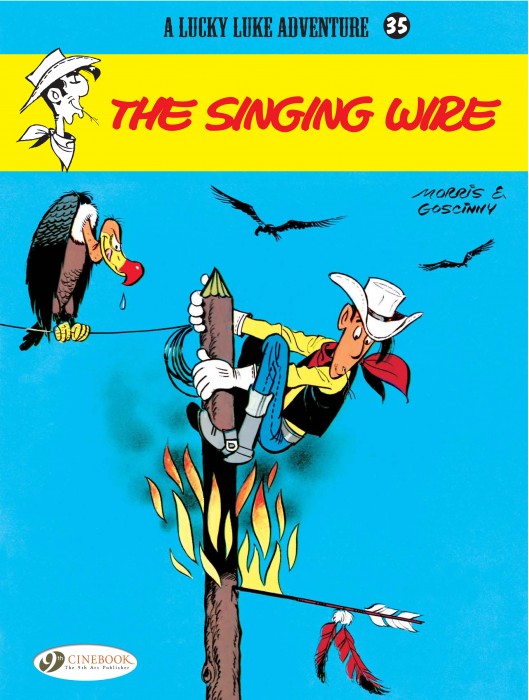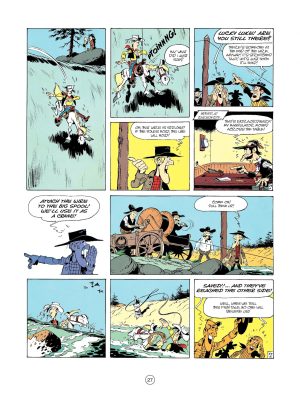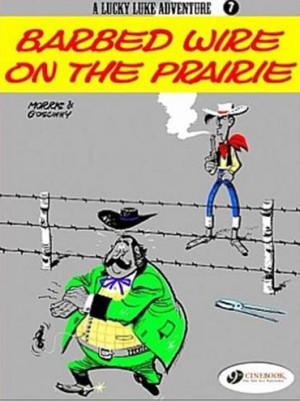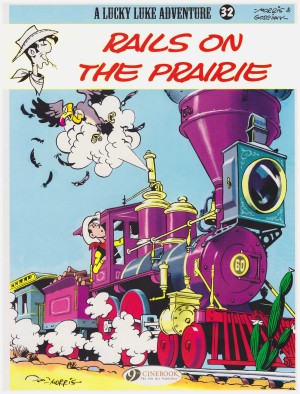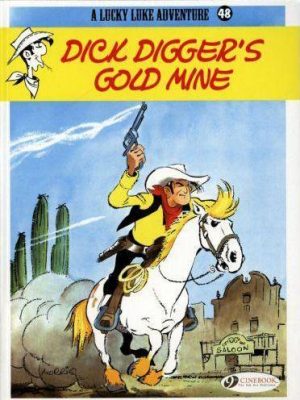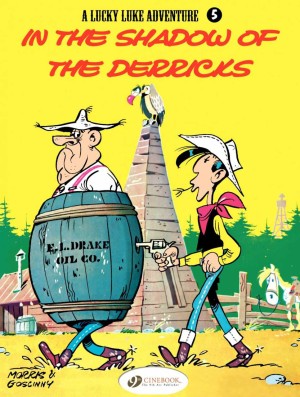Review by Frank Plowright
Due to the differences between the publication of material in France and Cinebook numbering books as they continue to issue them, this is volume 35 in English, but chronologically the 46th Lucky Luke book. Serialised in 1976, and issued as an album the following year in French, this was René Goscinny’s final work on the strip before his premature death in 1977. His collaborations with Morris had by that point run for twenty years, and two later books The Hanged Man’s Rope and Daisy Town would appear in the early 1980s, with Morris working from Goscinny’s plot ideas, the latter adapting an animated film.
There is a sense of symmetry about this being Goscinny’s final full Lucky Luke story, as it very much echoes his first, Rails on the Prairie, the similarity highlighted by Cinebook’s release schedule with this following three volumes after Rails whereas two decades separated the stories. Whether hurried, or perhaps running short of ideas, Goscinny returned to his first collaboration with Morris to refit the idea of two groups of workmen approaching a central point. In both cases there was an economic purpose, a reward at stake, and someone in whose best interests it was that one side was delayed. Twenty years of experience, though, meant Goscinny was a far better writer, and he’s more inventive here with his methods of sabotage. This is the better book.
The title refers to the Native American term for telegraph wire, as the wind made it sing, and the crux of the plot is the President, in this case Abraham Lincoln, determining that it would be in the country’s best interests if there was almost instant coast to coast communication. Luke is sent to the West Coast to oversee progress from Carson City eastwards.
After Goscinny’s death Morris suspended Lucky Luke for three years before deciding to work with other writers. He’d draw another 26 adventures before his own death in 2001.
